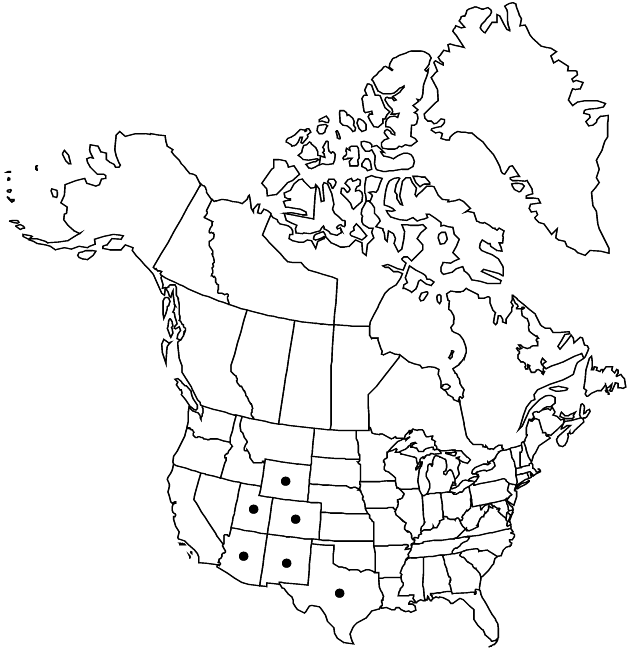Difference between revisions of "Townsendia annua"
Contr. Gray Herb. 183: 132, plate 22, fig. 4. 1957.
FNA>Volume Importer |
FNA>Volume Importer |
(No difference)
| |
Revision as of 18:43, 24 September 2019
Annuals, 3–12(–16+) cm. Stems decumbent to erect; internodes (1–)3–12(–18+) mm, strigose. Leaves mostly cauline, blades spatulate to narrowly oblanceolate, 8–12(–25+) × 1–3(–5+) mm, not fleshy, faces ± strigillose. Heads at tips of stems. Involucres ± hemispheric, 8–12(–16) mm diam. Phyllaries 26–30+ in 3+ series, the longer ± lance-ovate to oblanceolate, 5–6+ mm (l/w = 2.5–5), apices acute, abaxial faces strigillose to glabrate. Ray florets 12–30+; corollas white or pinkish to lavender adaxially, laminae 5–8+ mm, glabrous abaxially. Disc florets 60–120+; corollas 2.5–3.5+ mm. Cypselae 2–3 mm, faces hairy, hair tips glochidiform; pappi persistent; on ray cypselae ± 10 lanceolate scales 0.2–0.5(–1) mm; on disc cypselae 20+ subulate scales 1–2.5(–4) mm. 2n = 18.
Phenology: Flowering Apr–Jun(–Oct).
Habitat: Sandy soils, alkaline flats, red clays
Elevation: 1200–2100 m
Distribution

Ariz., Colo., N.Mex., Tex., Utah, Wyo.
Discussion
The type of Townsendia annua may prove to be conspecific with that of T. strigosa.
Selected References
None.